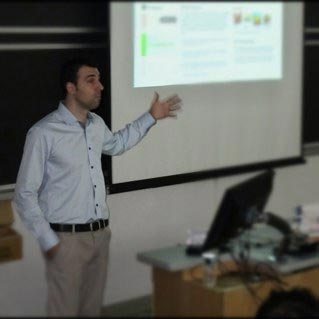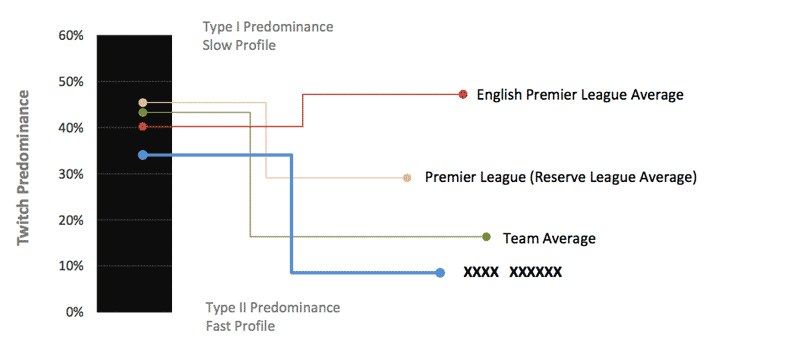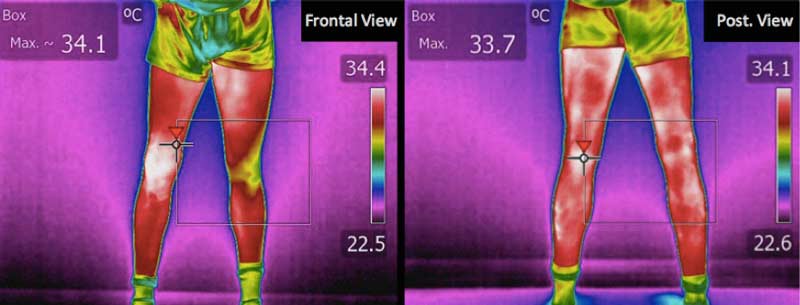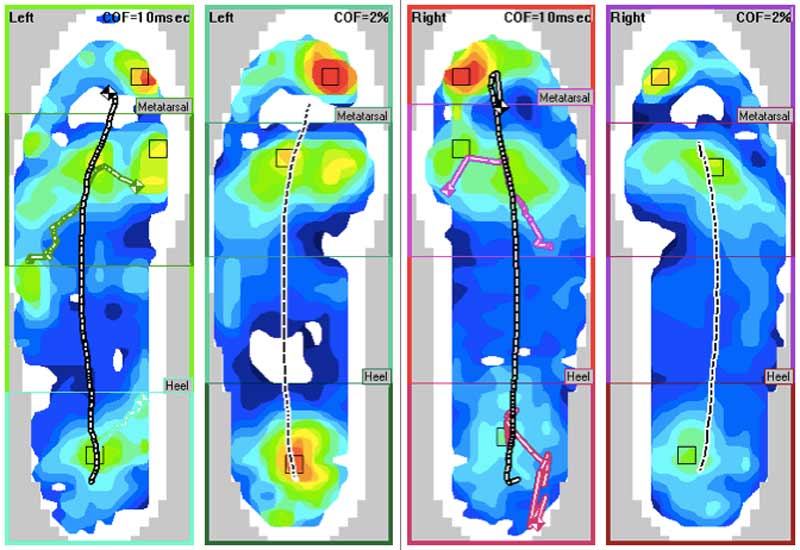
Over the past few years, Jose Fernandez stands as one of the most creative minds in sports performance and sports medicine. His experience ranges from the use of muscle diagnostic data, advanced physiological testing, to some of the most progressive solutions in sport. The last few years he has spearheaded Haloview, a consulting company in Spain and the UK.
Haloview is a medical and performance solution for teams and professional organizations in elite sport. The primary focus is to close the gap or widen the competitive margin for management, medical and coaching staff. Our service provides more than data analysis and visualization to our clients, we guide them to the right data sources and provide unparalleled insight.
Athlete Profiling with Fiber Type and Blood Analysis
Freelap USA — Can you get into some detail about the process from acquisition to analysis with data? For example, a team may do speed testing a few times a year but do blood draws and muscle fiber estimation randomly. Will you break down how organizing testing periods and managing data during a season is more than just picking convenient windows?
Fernandez — We need to evaluate training and measure its impact on the players. New wearables such as the Sensecore and others are working towards integrating external load and its physiological response and I am curious to see how athlete tracking systems develop beyond what they currently provide. I like to keep performance testing very minimal, but it is necessary. Specific power and speed tests done monthly is still useful and can be paired with more functional and movement based metrics.
Daily monitoring has to be passively aggregated along with short collection times for compliance. Wellbeing and subjective data are my starting point. Based on each athlete, coaches can decide whether to collect it remotely or on-site at the training ground. Morning heart rate and heart rate variability are widely used and I prefer mobile options. Facial coding adds more objectivity to the process. Some SDK options such as the Sightcorps platform are mobile and cloud friendly for easier customization. Coaches can explore the demo app if interested. I haven´t figured out what protocols work better with facial expressions but the potential is there, not just purely because of micro-expression analysis and mood correlations but because of the athlete´s honesty increases when interacting virtually.
Soft tissue dynamics and muscle function done weekly is essential since alterations at this level have a direct impact on injuries. Touching on myoanalytics again and without going in too much detail, the combination of thermal diagrams with tensiomyographic data is my preferred option and it’s simple to implement. Superficial temperature shows inflammation 24h post games and helps pinpoint which areas should be followed up with TMG for more structural detail, which can then lead to optimized recovery and therapy between games. Tonometers as the only option are less realistic within team settings due to longer testing times, hence the importance of highlighting areas of risk and use the thermal filter. A second thermal diagram 24h before games allows for comparison.
Trimestral blood panels help to gain insight into all the other areas such as muscle function and soft tissue recovery rates, mood patterns and nutrition. Fiber profiling is done in preseason and follow-up testing strategically placed during the season at similar times as blood analysis enables for comparison. Higher risk players undergo more muscle specific followup weekly to look at monthly patterns.
There are as many athlete monitoring strategies as there are coaches and I am never 100% comfortable with mine. Many more variables such as age, previous injuries, race or genetics, etc., have to be reviewed in order to design more individual approaches. I may change and adapt technologies to each environment, but the above provides roughly an idea of my philosophy. The process needs to be very flexible and adaptable since technology is being developed as we speak and we should be able to make changes and remove or add new metrics seamlessly.

Figure 1: Muscle Fiber Estimation profiling by Haloview
Carl’s Take — Profiling athletes is not about vertical jumps or a few speed tests, it’s a comprehensive battery of testing to identify areas that can be improved or screened out for underlying issues. For example, combining fiber type estimation and a simple series of conditioning tests, teams can individualize training and risk analysis better. Another example of combined profiling is using jump assessments, blood analysis (Hormones), and speed testing. Some athletes are surprising and reveal hidden talents, such as fast athletes who have impressive aerobic capacity, or slower fiber athletes with good power tests from long term development. One of the areas of interest I am focused on is moving away from subjective indicators to more powerful facial coding options with mobile devices.
MyoAnalytics and Monitoring
Freelap USA — MyoAnalytics is far behind player tracking data but is growing. Where do you see the biggest problems with teams in this area? A lot of physiotherapists don’t like the idea of objective measurements of their massage and coaches sometimes fear activation patterns of their training not being as effective. What is needed to make strides here in the US, a country new to this type of approach?
Fernandez — Myoanalytics refers to a number muscle monitoring practices from simple soreness surveys or manual palpation scores to a variety of technologies and methodologies. It is an extensive area of athlete monitoring and is gaining momentum. I still come across teams not able to collect RPE scores daily but asking about tensiomyography. The decision to incorporate more myoanalytic metrics should be based on a thorough review of current practices and analysis of needs more than social buzzing or new trends.
Education is the number one need followed by experimentation as muscle monitoring can be complex due to extensive datasets and rather cumbersome testing protocols so a pinch of creativity is needed to come up with functional and effective monitoring strategies, especially within team sports. As technology evolves, information regarding muscle function expands with the integration of complementary tools, both sensor and image based, bringing adaptability to the process but adding more challenges regarding data acquisition, management and interpretation. Most of these technologies are not API friendly which makes it more difficult. Parallel infrastructure is required for teams aiming for more informed decisions and without the right analytic support it is easy to swim in data that is not being used. Coaches need to evaluate what options are available or build proprietary solutions to avoid falling into random testing or giving up eventually.
Carl’s Take — When organizations start investing into various technologies, three major bottlenecks exist with data. The first is that most of the companies fail to either understand the need to integrate and aggregate data, or they purposely try to create a closed environment because they are looking for higher market shares. Second, most companies fail to see what organizations do with the data, and have limited reporting based on trying to take the lead of one or two questionable “leaders.” Following the wrong outside expert usually leads entire teams the wrong path. Finally, companies trying desperately to appease investors or the wrong clients sometimes try to do much and they would be better off creating a good API so the data can be used better.
The Future of Algorithm Development
Freelap USA — Algorithm is a big buzz word and we see a lot of AMS software promoting their “proprietary” promises with calculations and other coding. You have invested a lot of time into integrating a massive amount of data sets into your platform, could you get into details how you are able form connections between a lot of different areas?
Fernandez — Computational Sport Science (CSS) is becoming a major area of interest but in our field algorithms need to be presented in a different way, at least for now. Decisions depend on athletes, coaches and environments and the variability of these three aspects is extremely high to be handled in such a mechanical way. Mathematical models should automate processes not decisions. Algorithms are powerful data mining tools, but decisions will always belong to coaches. Teams need to be clear on this before wasting time and money looking for the Holy Grail.
Some athlete readiness algorithms make me question things since coordinating information from different systems is complex and models require legacy data that many teams don’t have is very chaotic or poorly maintained. On the other hand, some areas are better linked based on research and practical experience and here is where very simple models can help. Leveraging each area of understanding first can perhaps lead to prediction tables and more in the near future but meanwhile, it feels like trying to compare apples and oranges.
The only way to make progress with algorithms is experimenting within real environments and as long as we know who is accountable for any given model, how was it created and validated I don´t see why teams should not be looking into this. Many strength and conditioning coaches systematically reject anything that has to do with algorithms, but in the fu-ture teams ahead in this area will have an advantage.
Carl’s Take — An algorithm can mean almost anything, but one should think about automating versus something that is thinking for you. Too many coaches rely on algorithms or formulas by adopting solutions that are made by third parties. The goal of the algorithm is that the most complex tasks are often tedious and some repeated tasks can be alleviated with automation. While automation does help with decision making, a custom algorithm is one’s own logic modeled, in a way, that it repeats the train of thought provided the complexity of the problem is not overwhelming.
Athlete Recovery and Player Education
Freelap USA — Futbol is increasing the demand on players because of the travel challenges and seasonal and game outputs of players. Regeneration is highly prized, but much of the methodologies are unknown in value or power. Could you share some cutting edge methods and some classic and time tested options to get players more compliant? You mention infographics and visualization techniques. Anything more here?
Fernandez — I don’t have any cutting edge methods besides trying to do the basics right with training, nutrition, sleep and regeneration. Research is one thing and we need to keep an eye on it but I miss more teams running in-house case studies to better manipulate recovery aspects and individual responses. Your conversation with David Tenney was outstanding and the table shared by Landon Evans is a perfect example of what I mean.
Getting athletes compliant and buying into the system is also important as some methodologies can be quite a pain if not properly presented. The way information is shared is very individual to each athlete and two players can’t be treated the same. Coaches need outstanding communication skills. Visual support and infographics are useful educational tools to refine athlete’s perception. Visual content paired with minimal text is easy to assimilate.
Simple HTML5 templates with four or five sliding panels can be shared via mobile phones to display current vs target, specific timelines and even treatment differences or simple rehab milestones. Coaches don’t need to design visual stories like Alberto Cairo and options such as the Visage platform (soon to be released) can help. Again, fancy infographics are useless if there is a lack of good face to face communication, the approach is incorrect or the athlete feels he is being treated like a rat and nothing changes after giving us his data.

Figure 2: Another example of a progressive direction teams are going to, with thermography being ahead of the curve with MyoAnalytics and athlete recovery.
Carl’s Take — A word of caution with thermography as it’s not just about getting a FLIR camera. First of all the sensitivity of thermography is poor for medical perspectives and is great only for chronic issues or very obvious problems, likely to be reported subjectively by athletes. Second is workflow, only one company provides a real medical solution and the manual readings require third-party software to automate this process. Only a few consult-ants are able to provide rapid solutions for teams, and thermography is effective with other solutions like Elastography , TMG, or using a Myoton device. I like themography for warming up to see how specific preparation schemes are working, but does this matter in team programs that may have a coach that doesn’t allow for it or thinks it’s not needed? Yes, in my opinion. Data is not just for interventions, but to create the necessary dialogue to be able to have them.
Outsourcing Specialized Services
Freelap USA — Podoactiva is big in Spain and several high-profile players have foot mechanics evaluated. A lot of barefoot science and manual therapists are not fans of orthotics. What is your approach when collaborating with podiatrists, physical therapists, coaches, and performance specialists? Could you get more into high-end timelines beyond the AMS junk out there and show how organizations can speed up results with out-sourcing?
Fernandez — Podoactiva and Real Madrid is an example of how teams and service providers can collaborate. I am probably biased as I provide outsourcing options for organizations, but my philosophy when building medical and performance teams is about finding versatile coaches, not experts. Outsourcing is not an alternative but a complement to current approaches and it allows coaches to use their time more efficiently while prioritizing other aspects such as training and therapy. Simple things can be a challenge when they have to be done with thirty or more players. You mentioned foot and biomechanics and that is probably the most straightforward example for outsourcing as granular information requires a holistic approach and HD cameras, gait and foot dynamics with markers of muscle function is just a standard but can be done and reported in a matter of hours with the right team of experts and the process is very insightful when coaches get involved, but they need to get involved. Some coaches do not like outsiders or complain about costs but approaches are always evolving and up to date. Spending on technology that will only be used a few times a year may be less wise.

Figure 3: Pressure mapping combined with wireless EMG, Motion Capture, and soft tissue diagnostics is a combination that is essential to seeing a cause and effect. All data sets must be analyzed together, or speculation and bias will create additional problems for teams.
Carl’s Take — Budgeting is a key area with teams, and SaaS or Science as a Service is growing in popularity. Sometimes education and experience can’t be done internally, and shop-ping for a good consultant or service is wise. It is better to outsource and have a repeatedly excellent service with convenience over spending year trying to build various solutions that are likely obsolete by the time you are done building them. You can’t be an expert in all areas, but you can be educated enough to be a superb shopper.
Please share this article so others may benefit.
[mashshare]Carl explains this perfectly, read and learn. http://t.co/0UzJohDp8v
— Tom McDonald (@gurustrada) July 31, 2014
https://twitter.com/AlxPett/statuses/494003174739427328
If you work with athletes read @jfernandez__ on Athlete Profiling, Myoanalytics, Monitoring, Algorithms & Recovery. http://t.co/fHNZJkQ3B2
— Jorge Carvajal (@carvperformance) July 28, 2014
https://twitter.com/jfernandez__/statuses/493829651337592832


